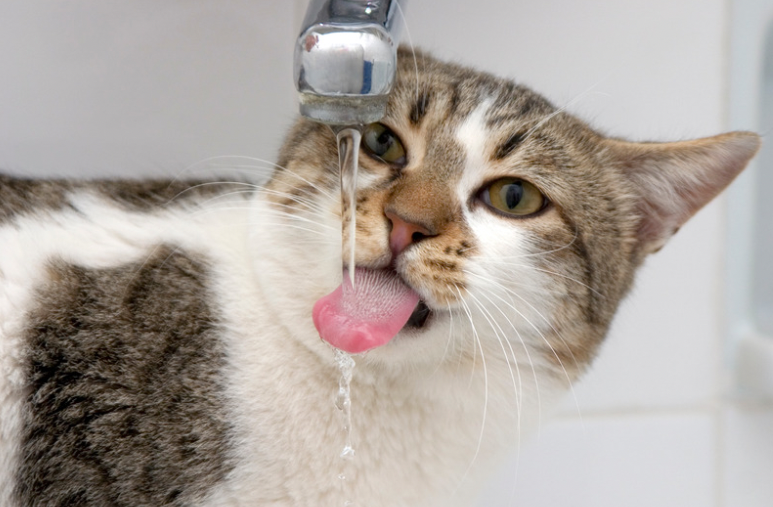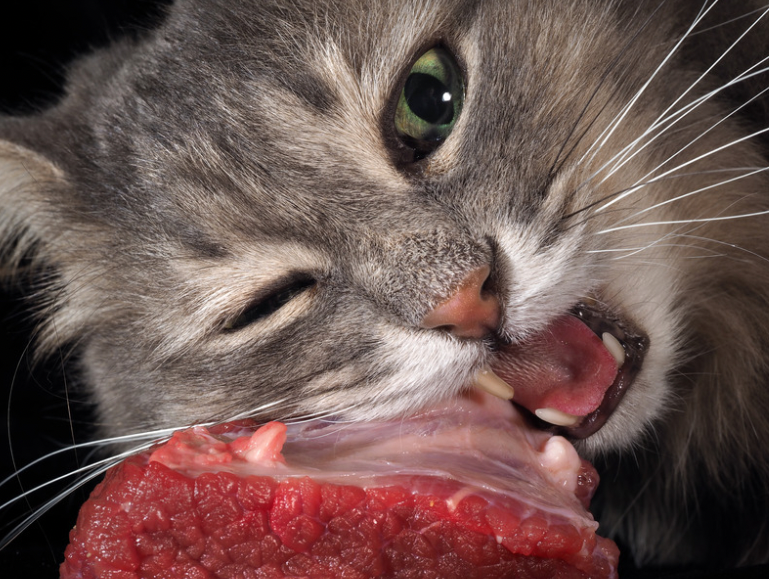
Think of it like this.
Mice, rats, birds, and rabbits are all about 75% moisture. Dry kibble formulas are about 5 – 10% moisture. Cats, as descendants of desert dwellers, have a depressed thirst-drive.
Out in the desert, running water is scarce and animals that survive in those harsh conditions need to be able to get the moisture from the food they eat – namely prey (like mice, etc). Fed a diet short on moisture, mixed with a genetic predisposition *not* to drink water, means cats are far more likely to develop urinary tract issues…not to mention obesity and diabetes.
An ounce of prevention is worth a pound of cure, so what’s the easiest way to help your kitkat avoid the pitfalls of their lower thirst drive?
Start by making sure that your cats always have access to fresh water. Water sitting in a bowl will likely be considered “yucky” by your cat after just a few hours. So make sure you’re wiping and rinsing the bowl several times a day. (As you are catering to your finicky feline, remember that dogs have owners and cats have staff…)
Many cats prefer running water, so you might think about investing in a filtered fountain for your kitty, as opposed to turning on the faucet for them every time they’d like a sip.
With access to fresh, clean running water your kitty might drink more…but he probably still won’t drink enough.
This brings us back to our initial problem - how to get more moisture into a dry-fed kitty.
It’s simple, silly! (Well, depending on the cat…) Add it to his diet! Adding some canned food (or better yet raw frozen) – even just once a day – can make a major impact on your kitty’s health over the long term. Of course, cats can become dry food addicted and they may resist this (in their opinion) completely unnecessary change to their lifestyle. Many dry cat foods are sprayed with a tempting animal digest to make them irresistible to felines. Dr. Lisa Pierson, DVM has written some great info with lots of tips on how to make a successful transition from dry to wet food with even the most stubborn cats.
Transitioning your cat from a dry food diet to a canned or raw food diet has another, often overlooked, benefit. On moist, meat-based diets the litter box output is smaller and less odorous. This is because there are less fillers and carbohydrates in a good canned food, meaning there is less “waste”. Less waste means…well…you know.
If you’re interested in making the change to canned food, come into one of our stores and let us help you pick the right cans to try.


